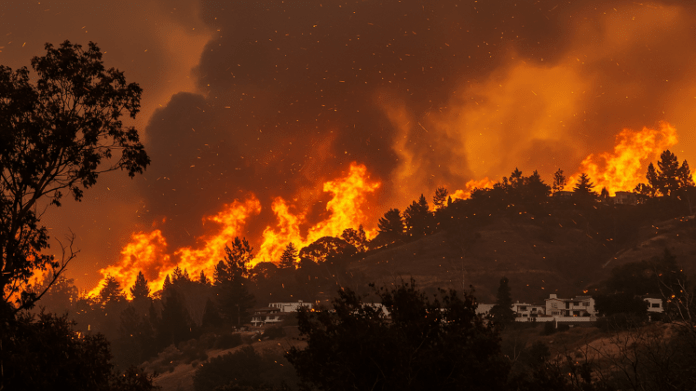- High overall losses of around US$ 131bn slightly lower than last year – but well above long-term average
- Fires on the outskirts of Los Angeles in January cause highest wildfire losses of all time
- Very high claims expenditure for insurers: Almost US$ 80bn, mainly driven by wildfires in the United States
- Insured losses were the second-highest in the first half of any year since 1980


H1 2025 natural disasters in figures
Worldwide, natural disasters caused overall losses of around US$ 131bn in the first half of 2025 (previous year, adjusted for inflation: US$ 155bn), of which US$ 80bn was insured (in 2024: US$ 64bn). Both overall losses and insured losses were significantly higher than the average for the previous ten years and the previous 30 years (adjusted for inflation: overall losses of US$ 101/79bn, insured losses of US$ 41/26bn). Insured losses in H1 2025 were the second-highest in the first half of any year since our records began in 1980. Only in the first half of 2011 were insured losses even higher, attributable to a severe earthquake and destructive tsunami in Japan.
Weather disasters caused 88% of overall losses and 98% of insured losses, while earthquakes accounted for 12% and 2% respectively.
The most severe natural disasters in H1 2025
Devastating wildfires in the Los Angeles area
The wildfires in the greater Los Angeles area resulted in the costliest natural disaster during the first six months of 2025. Moreover, they occurred in winter, which is typically rainy. The overall loss is estimated at US$ 53bn, around US$ 40bn of which was insured. Never before had wildfires caused such extensive damage. The overall losses and insured losses due to this single event were nearly twice as high as global wildfire losses in 2018, which had previously been the most expensive wildfire year. 29 people perished in the fires.
Numerous studies indicate that climate change is increasing the risk of wildfires by elevating the frequency of conditions that cause them. But the set of circumstances regarding the LA fires is complex:
- For example, the rainy season in Southern California usually begins around October. But in 2024, there was very little rain.
- In previous years, an abundance of precipitation had conversely allowed vegetation to flourish. After a long dry phase in late 2024 and early 2025, an excess of highly flammable brush fuelled the wildfires.
Exacerbated by California’s strong winter winds, known as the Santa Ana winds, the conditions constituted a textbook scenario for wildfires. Once the fires had started on 7 January, wind gusts and gales acted like flamethrowers – flinging sparks across landscapes, in turn setting one building after another ablaze.
Chief climate scientist Tobias Grimm explains: “Strong Santa Ana winds are common in California during winter. At the same time, the wildfire season there tends to last longer than in the past because there is often less precipitation in the cooler months. This means that two accelerants, drought and strong winds, coincide more frequently. Then all it takes is just one spark in the wrong place for disaster to strike.”
Munich Re has been supporting the Institute for Business and Home Safety (IBHS) in the USA for many years to research methods designed to prevent losses. Among other things, IBHS conducts analyses of construction designs and methods that can both strengthen the fire resistance of buildings and prevent fire from spreading from one structure to the next.
The impact of climate change on weather disasters has been shown by research many times over. There is a well-established consensus within the scientific community that climate change makes many weather-related disasters more frequent and severe. After the record year of 2024, the current year is again on its way to ranking among the warmest since the beginning of systematic record-keeping. Based on NOAA data, the annual average global temperatures in the first half of 2025 reached 1.4°C above pre-industrial levels (1850–1900), making it the second-warmest first half-year on record.
Many fatalities following Myanmar earthquake
A 7.7-magnitude earthquake in Myanmar on 28 March was first and foremost a devastating humanitarian disaster, killing an estimated 4,500 people. The epicentre was near the cities of Sagaing and Mandalay, home to over one million residents. All in all, the quake is estimated to have caused economic losses of some US$ 12bn – making it the second-costliest natural disaster in H1 2025. Only a small percentage of those losses were insured.
The region is regarded as very earthquake-prone. The quake occurred along the Sagaing Fault, which runs through Myanmar from north to south. The earthquake even caused damage in the Thai capital of Bangkok, approximately 1,000 km from the epicentre. Damage there was mainly attributable to the deep and soft alluvial soil beneath Bangkok, which not only amplifies ground motion but also increases its duration.





